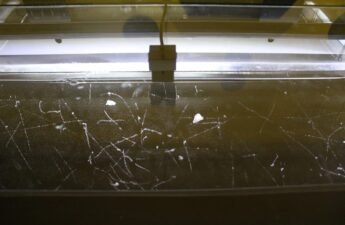A locust swarm destroys crops and pastures it finds along the way, causing economic loss. Moreover, can travel for long distances.
Locust swarm formation
The conditions to form a locust swarm are:
- High temperatures.
- Dry weather.
- Reduction of natural predator’s population, due to incorrect use of pesticides and insecticides.
- Food shortage in swarm formation site.
The locust change color when form large groups. When one touches constantly in the hind legs of another, there is an increase of serotonin in nervous system.

The increase of serotonin changes behavior from avoiding other locusts, to being attracted by members of species. Also goes through several physiological and metabolic changes. This transformation includes wing size reduction, diurnal habits, higher fat deposit, smaller eyes and antennas, sharper taste and touch sensors, and broad diet.

When there is a food shortage, the locust concentrate in small areas with food and are forced to enter in contact with each other. Causing transformation and migration. Exist hundred of know locust species, but only a minority destroy crops.
How to fight a locust swarm?
The main measure to reduce swarm’s population is the massive use of insecticides. Which are launched from ground vehicles, aircraft, or individuals with protective clothing.

Recently, started using drones to lauch insecticides.

Low temperatures and natural predators also help to disperse the swarm. Monoculture plantations facilitate the rise of this plague, because there is an open field without trees, making easier the swarm movement. In addition to big loads of pesticides, which put away or eliminates natural predators.
Reverting to solitary mode
Can a locust in swarm or gregarious mode revert to solitary mode? Yes, if a gregarious locust stays isolated for enough time, it returns to solitary mode. Locust in gregarious mode can generate offsprings which mature in solitary mode since they are isolated.



